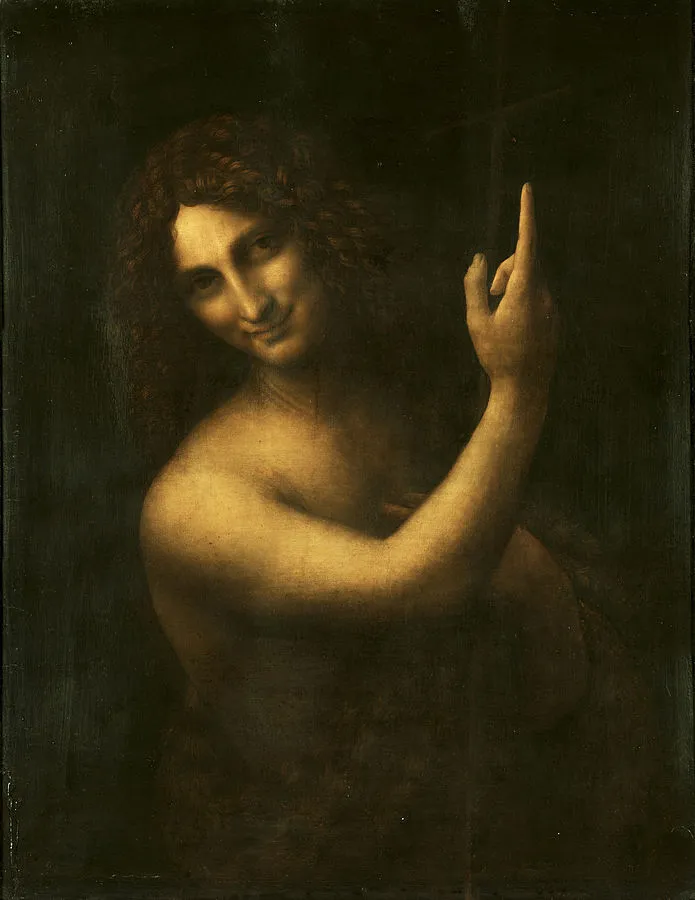The Louvre Has Restored “St. John the Baptist”
To clean, or not to clean?
/https://tf-cmsv2-smithsonianmag-media.s3.amazonaws.com/filer/47/ba/47ba9a60-a4ae-4bf6-925f-24dfc2b99662/leonard_saint_jean_baptiste_apres_restauration.jpg)
Earlier this year, the Louvre Museum in Paris threw parts of the art world into an uproar when it announced its conservators would be taking a crack at cleaning another one of Leonardo da Vinci’s masterpieces. Now, after nine months of restoration work, "St. John the Baptist” is back up on display.
Completed only a couple of years before the Renaissance master’s death in 1519, “St. John the Baptist” has long been lauded as one of da Vinci’s greatest works. While the “Mona Lisa” and “The Last Supper” may get a lot of press, the portrait of the Catholic saint has awed artists and historians alike for his masterful “sfumato” technique, which gave his subject a sumptuous softness and murky quality, Eric Bietry-Rivierre reports for the French newspaper Le Figaro. However, since the painting’s last cleaning in 1802, its surface darkened as several coatings of varnish aged and oxidized.

“The details are in the shadow now, while 10 or 20 years ago they were more visible,” Vincent Delieuvin, the Louvre’s chief conservationist for Italian Renaissance art, told Inti Landauro for the Wall Street Journal in January.
However, the announcement was met with protests from many critics in the art world who feared that restoration attempts could permanently damage the painting.
“The restoration has to be deplored just by virtue of what they did on the last Leonardo,” Michael Daley, the head of restoration watchdog ArtWatch UK told Alice Philipson for The Telegraph earlier this year. “One simply can’t trust them to do a good job.”
The controversy stems from an earlier restoration attempt of another da Vinci painting by the Louvre in 2013. Many art historians cried foul following the unveiling of the museum’s attempt to clean “The Virgin and Child with St. Anne,” which resulted in the painting being lightened, some of the original paint removed, and even some of its details being changed, Lorena Muñoz-Alonso reports for artnet News.
The restoration of “The Virgin and Child with St. Anne” was divisive even among the conservators overseeing the project. Several members of a panel in charge of that restoration resigned in protest over the techniques that were used, Philipson reports. With that in mind, some art historians have decried the Louvre’s decision to try to restore “St. John the Baptist,” accusing the museum of simply trying to stir up attention at the risk of permanently damaging the painting.
While any attempt at cleaning a painting as old as this carries an amount of risk, it appears that this one was a success. Bietry-Rivierre reports that nearly half of the painting’s original 15 layers of varnish coating were removed in the process, which has allowed some of the details to once again pop out, including the saint’s curly hair and the fur pelt he wears in the portrait. The restored version also pulls da Vinci’s murky details in the forefront once again.
With the painting now back on display at the Lourve, you can judge the restoration job for yourself.